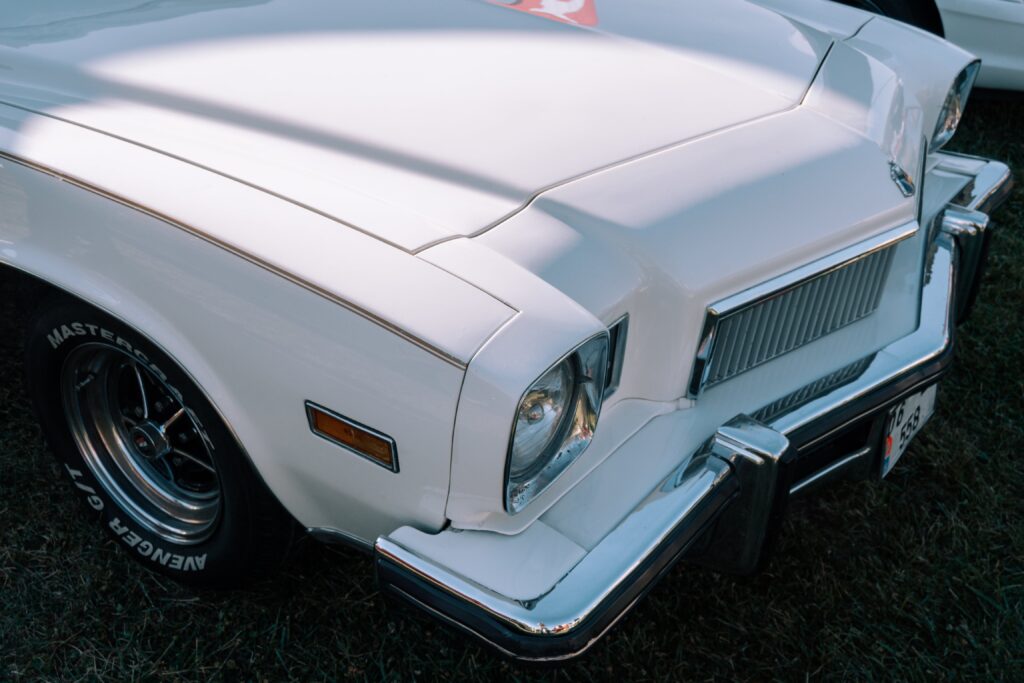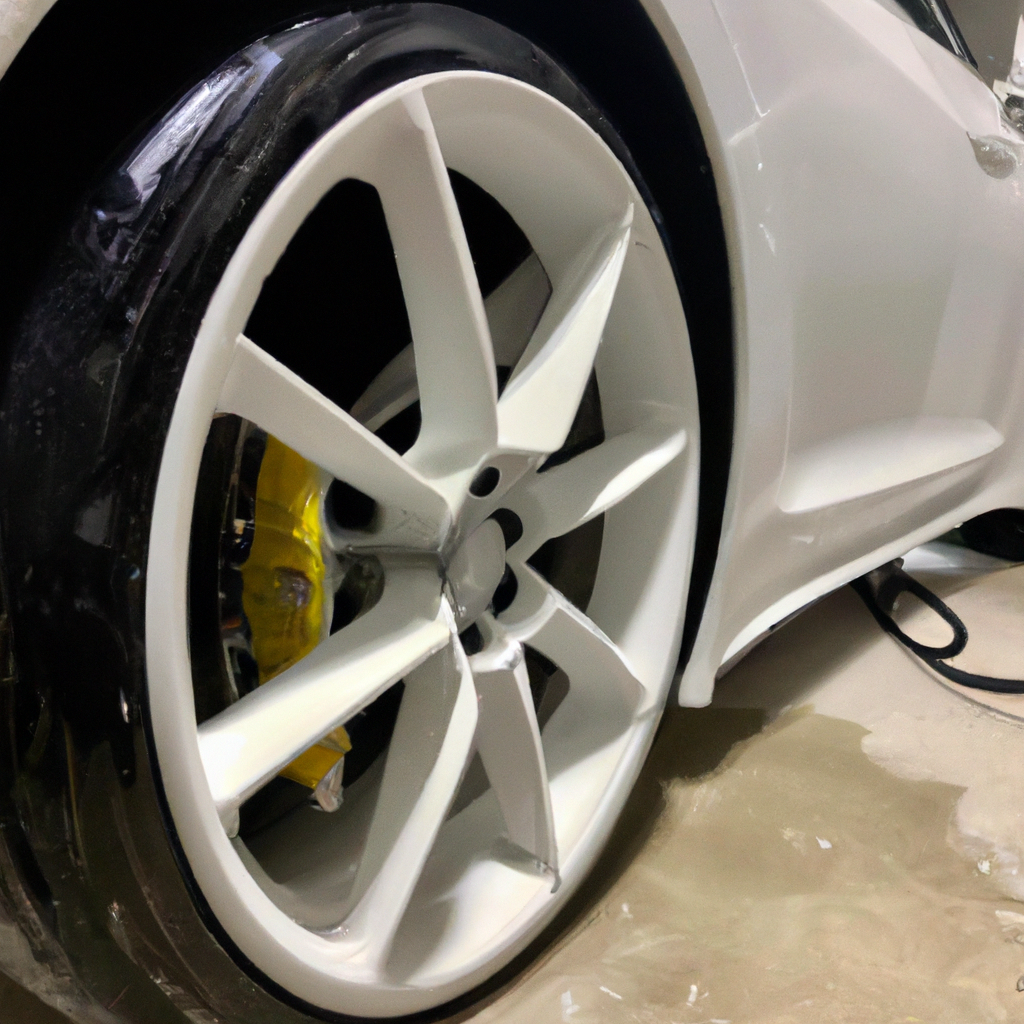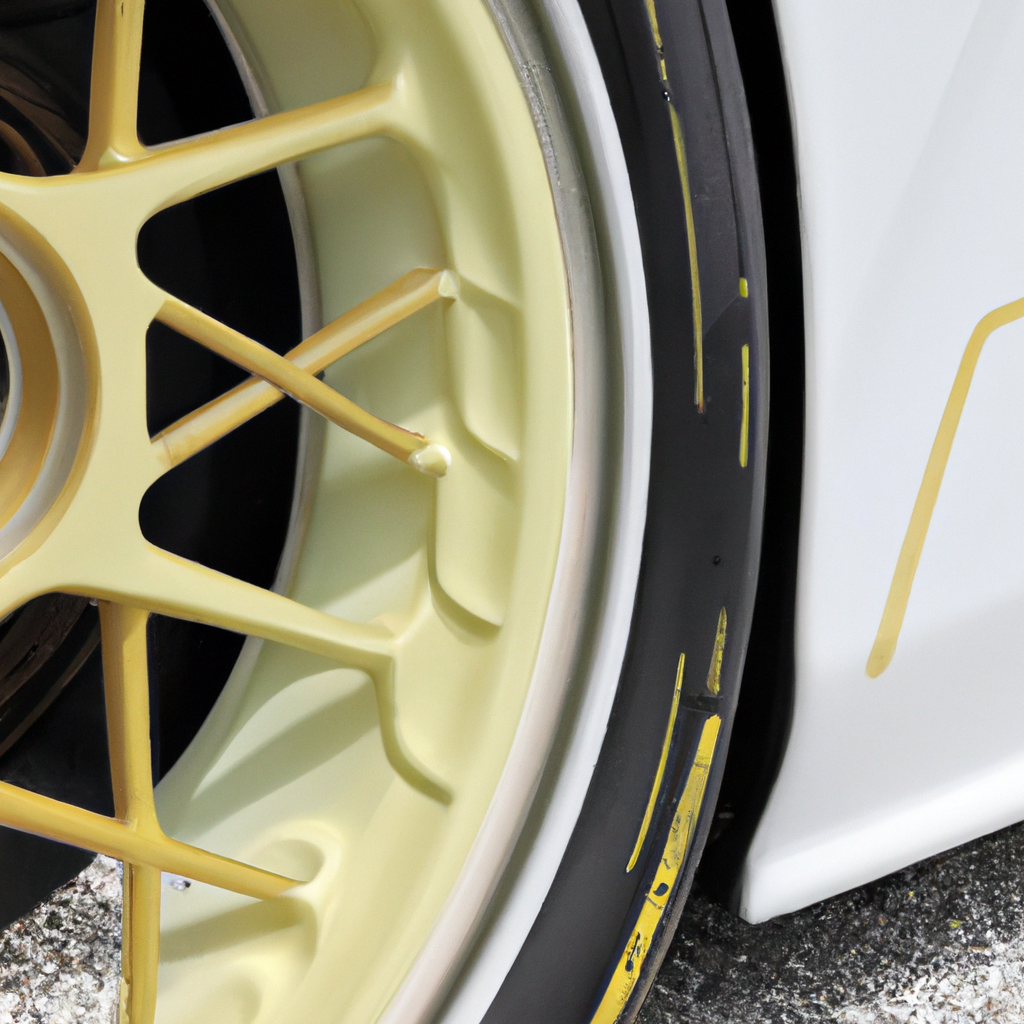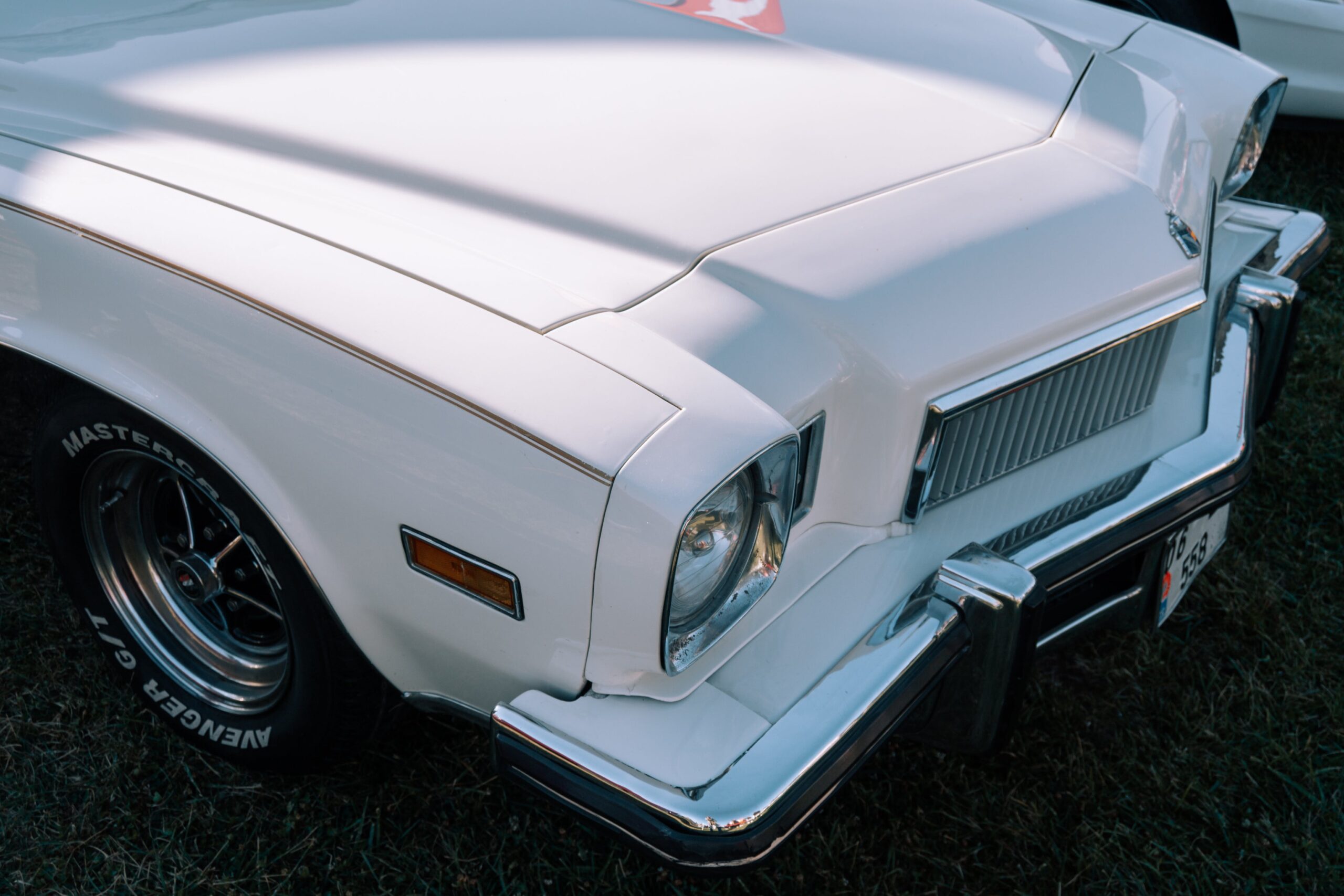You love your car and take pride in its appearance. But you often find yourself worrying about the durability of your wheel finishes. Will they end up scratched and damaged by the elements and road debris? That’s where ceramic coatings come in. These innovative coatings form a protective barrier on your wheels, shielding them from the wear and tear of everyday driving. With a ceramic coating applied, you can enjoy peace of mind knowing that your wheel finishes are well-protected, allowing your car to continue looking stunning for years to come.
What are ceramic coatings?
Definition
Ceramic coatings, also known as nano-ceramic coatings or glass coatings, are a protective layer infused with ceramic particles that bond to the wheel surface. This high-tech coating forms a long-lasting protective barrier that enhances the durability of wheel finishes.
How do they work
Ceramic coatings utilize nanotechnology to create a chemical bond with the wheel surface. The ceramic particles fill in microscopic imperfections, creating an ultra-smooth and hydrophobic surface. This hydrophobicity repels water, dirt, and other contaminants, keeping your wheels cleaner for longer. The strong chemical bond ensures that the coating withstands harsh environmental elements and provides long-lasting protection for your wheel finishes.
Types of ceramic coatings
There are various types of ceramic coatings available on the market, ranging from consumer-grade to professional grade. Consumer-grade ceramic coatings are typically easier to apply and may provide several months to a year of protection. Professional-grade ceramic coatings, on the other hand, are more durable and can provide protection for several years with proper maintenance.
Advantages of ceramic coatings for wheels
Enhanced durability
Ceramic coatings provide a tough, protective layer that shields your wheel finishes from the elements. The ceramic particles bond with the surface at a molecular level, creating a hard and durable coating that can withstand daily wear and tear. This enhanced durability ensures that your wheels look pristine for a longer period of time.
Resistance to scratches and chips
One of the key benefits of ceramic coatings is their ability to resist scratches and chips. The ceramic particles create a hard barrier that reduces the likelihood of small rocks, road debris, and other objects causing damage to your wheels. This protection is particularly important for those who frequently drive on rough roads or encounter harsh weather conditions.
Protection against UV rays
UV rays from the sun can cause fading and discoloration of wheel finishes over time. Ceramic coatings act as a barrier against UV rays, preventing them from damaging the wheel surfaces. By protecting against UV rays, ceramic coatings help preserve the color and shine of your wheels, keeping them looking like new.
Water and dirt repellency
Ceramic coatings create a hydrophobic surface, which means that water and dirt slide off the wheels more easily. This makes cleaning your wheels a breeze, as dirt and grime are less likely to stick to the surface. The hydrophobic properties also help to reduce water spots, allowing your wheels to maintain their glossy appearance.

How ceramic coatings can protect wheel finishes
Preventing oxidation
Oxidation is a common issue that can affect the appearance of wheel finishes. Ceramic coatings provide a protective layer that prevents oxygen from reaching the surface of the wheels, effectively reducing the risk of oxidation. By preventing oxidation, ceramic coatings help to maintain the original color and finish of your wheels for a longer period of time.
Shielding against brake dust
Brake dust is a notorious enemy of wheel finishes. The high temperatures generated by braking can cause brake dust particles to embed themselves into the surface of the wheels, leading to discoloration and damage. Ceramic coatings create a barrier that shields the wheel surface from brake dust, making it easier to clean and preventing it from causing long-term harm to your wheels.
Safeguarding against road contaminants
On the road, your wheels can come into contact with a variety of contaminants such as tar, oil, and bird droppings. These substances can be corrosive and have the potential to damage wheel finishes. However, ceramic coatings provide a protective barrier that helps to safeguard against the corrosive effects of these road contaminants, keeping your wheels looking clean and pristine.
Preserving the appearance
The appearance of your wheels plays a significant role in the overall aesthetic of your vehicle. Ceramic coatings help preserve the appearance of your wheel finishes by preventing damage and maintaining their original shine. With ceramic coatings, you can enjoy a long-lasting glossy finish that will turn heads wherever you go.
Application process of ceramic coatings
Preparation of wheel surface
Before applying a ceramic coating, it is crucial to thoroughly clean and prepare the wheel surface. This involves washing the wheels with a mild detergent to remove dirt, grease, and other contaminants. A clay bar can then be used to remove any embedded particles that may be stuck on the surface. Finally, a polish may be applied to remove any remaining imperfections and create a smooth surface for the ceramic coating to bond with.
Application techniques
When applying a ceramic coating, it is important to follow the manufacturer’s instructions carefully. The coating is typically applied using a specialized applicator pad or microfiber cloth. It is important to apply the coating in thin, even layers to ensure proper bonding with the wheel surface. The coating should be allowed to sit for the recommended amount of time before being wiped off with a clean cloth.
Curing and drying
After the ceramic coating has been applied, it needs to cure and dry. This typically involves leaving the vehicle untouched for a specified period of time, allowing the ceramic coating to fully bond with the wheel surface. Curing and drying times may vary depending on the specific product used, so it is important to consult the manufacturer’s instructions for the recommended duration.

Factors to consider before applying ceramic coatings
Wheel material and finish
Ceramic coatings can be applied to various types of wheel materials and finishes. However, it is important to consider the specific characteristics of your wheels before applying the coating. Some coatings may be better suited for certain types of materials or finishes, so it is important to research and choose a ceramic coating that is compatible with your specific wheel type.
Condition of the wheels
The condition of your wheels should also be taken into consideration before applying a ceramic coating. If your wheels have deep scratches, dents, or other severe damage, the ceramic coating may not be as effective in providing protection and enhancing their appearance. It is recommended to address any significant damage before applying the ceramic coating for optimal results.
Climate and environmental factors
The climate and environmental conditions in which your vehicle is frequently exposed to can also impact the performance of ceramic coatings. Extreme temperatures, high levels of humidity, or harsh chemicals can affect the durability and longevity of the coating. It is important to choose a ceramic coating that is suitable for the specific climate and environmental factors that your vehicle will encounter.
Maintenance of ceramic-coated wheels
Regular cleaning
To maintain the effectiveness of the ceramic coating, regular cleaning is essential. It is recommended to wash the wheels with a pH-neutral car shampoo and a soft sponge or microfiber cloth. Avoid using abrasive brushes or harsh chemicals, as these can compromise the integrity of the coating. Regular cleaning will help remove dirt and contaminants, ensuring that the ceramic coating continues to provide protection and enhance the appearance of your wheels.
Avoiding abrasive materials
To prevent scratching or damaging the ceramic coating, it is important to avoid using abrasive materials during the cleaning process. This includes abrasive cleaners, brushes with stiff bristles, or rough sponges. Opt for soft microfiber cloths or applicator pads that are gentle on the coating. By using gentle cleaning techniques, you can preserve the longevity of the ceramic coating and maintain the aesthetics of your wheels.
Reapplication of ceramic coating
Over time, the effectiveness of ceramic coatings may diminish due to exposure to environmental elements and regular wear and tear. It is recommended to periodically inspect the condition of the ceramic coating and consider reapplying it if necessary. The frequency of reapplication will depend on factors such as the quality of the coating, environmental conditions, and the level of maintenance. Regular reapplication will ensure that your wheels continue to receive optimum protection and maintain their glossy appearance.
Proper storage and handling
When not in use, it is important to store ceramic coatings in a cool, dry place away from direct sunlight. Extreme temperatures can affect the stability and performance of the coating. Additionally, proper handling of the ceramic coating during application is important to avoid contamination or damage. Following the manufacturer’s instructions for storage and handling will help maximize the lifespan and effectiveness of the ceramic coating.

Professional vs. DIY ceramic coating
Benefits of professional application
Having a professional apply the ceramic coating to your wheels can offer several advantages. Professionals are often experienced and have the necessary training to ensure that the coating is applied correctly and evenly, maximizing its durability and effectiveness. Additionally, professional application may come with a warranty, providing added peace of mind.
Cost considerations
Professional application of ceramic coatings can be more expensive compared to DIY options. The cost will depend on factors such as the size of the wheels, the complexity of the application process, and the location. It is important to consider your budget and weigh the benefits of professional application against the cost.
Suitability for DIY
For those who have the time and patience, applying a ceramic coating yourself can be a rewarding and cost-effective option. Many consumer-grade ceramic coatings are designed to be user-friendly and can provide satisfactory results with proper preparation and application. If you choose to take the DIY route, make sure to carefully read and follow the manufacturer’s instructions to ensure the best outcome.
Potential drawbacks of ceramic coatings for wheels
Expense
Compared to other wheel protection methods, ceramic coatings can be more expensive. The initial cost of purchasing the coating and the application supplies, along with any professional application fees, can add up. Additionally, the regular reapplication of ceramic coatings may require additional investment over time. However, it is important to remember that the long-lasting protection and enhanced appearance provided by ceramic coatings can outweigh the initial expense for many car owners.
Time-consuming application
Applying a ceramic coating to your wheels can be a time-consuming process. The preparation, application, and curing time can take several hours or even days depending on the specific product and conditions. It is important to set aside enough time to complete the process properly and allow the coating to bond effectively. For those with limited time or patience, professional application may be a more convenient option.
Limited effectiveness on severely damaged wheels
While ceramic coatings offer enhanced protection, they may have limited effectiveness on severely damaged wheels. Deep scratches, pitting, or other significant damage may require additional repairs before applying the ceramic coating. It is important to assess the condition of your wheels and address any major damage before applying a ceramic coating to ensure the best possible outcome.

Alternative wheel protection options
Paint sealants
Paint sealants are another option for protecting wheel finishes. These synthetic polymer-based products create a durable barrier that shields the wheels from environmental elements and provides a glossy finish. Paint sealants are typically easier to apply than ceramic coatings and can offer similar protection, although they may not be as long-lasting.
Wheel wax
Wheel wax is a popular choice for enhancing the appearance of wheel finishes. This product creates a protective layer that helps repel water and dirt, making cleaning easier. Wheel wax can be applied directly to the wheels and buffed to a high shine. However, it is important to note that wheel wax may not provide the same level of durability and protection as ceramic coatings or paint sealants.
Wheel wraps or covers
If you want to protect your wheels from physical damage, such as scratches or chips, wheel wraps or covers can be a viable option. These protective films are applied directly to the wheel surface and provide a layer of defense against road debris and other objects. Wheel wraps or covers are removable, making them a convenient choice for those who want to change their wheel appearance periodically.
Conclusion
Ceramic coatings provide numerous advantages for wheel protection, enhancing durability, resisting scratches and chips, protecting against UV rays, and repelling water and dirt. They prevent oxidation, shield against brake dust and road contaminants, and preserve the appearance of wheel finishes. The application process involves preparation of the wheel surface, careful application techniques, and proper curing and drying. Before applying ceramic coatings, it is important to consider the wheel material and finish, the condition of the wheels, and the climate and environmental factors. Regular maintenance is crucial, including gentle cleaning, avoiding abrasive materials, reapplication when necessary, and proper storage and handling. The choice between professional and DIY application depends on factors such as experience, cost, and preference. While ceramic coatings have potential drawbacks, such as expense and time-consuming application, alternative options like paint sealants, wheel wax, or wheel wraps can provide alternative solutions. Overall, ceramic coatings offer a long-lasting and effective way to protect and enhance the appearance of your wheel finishes.


